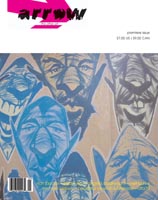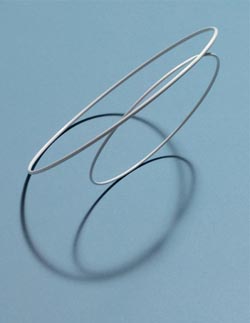Terra Cibus
A commercial photographer turns to a laboratory in this collection of foodie art
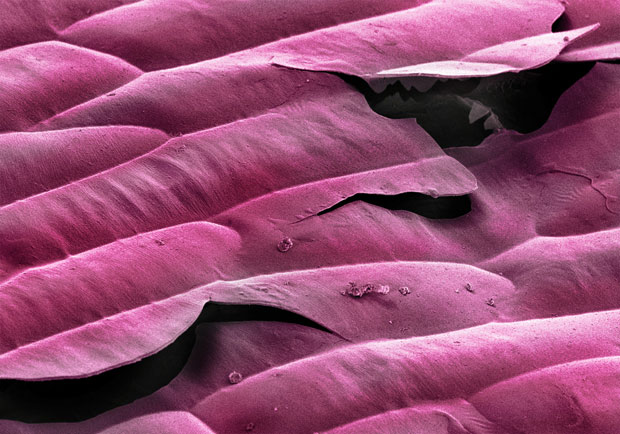
Driven by recent concerns over the nature and origin of our daily bread, Caren Alpert set out to examine common foods on a more intimate level. Armed with a scanning electron microscope, the photographer undertook Terra Cibus, her largest project to date. Commenting on the equipment used to take her shots, Alpert explains, “This is not something you put on a counter at a lab and you look through an eyepiece. It’s the size of a small bedroom.” Without an academic background in science, Alpert spent the first three months researching the equipment that would be necessary to photograph the microscopic surfaces of foods.
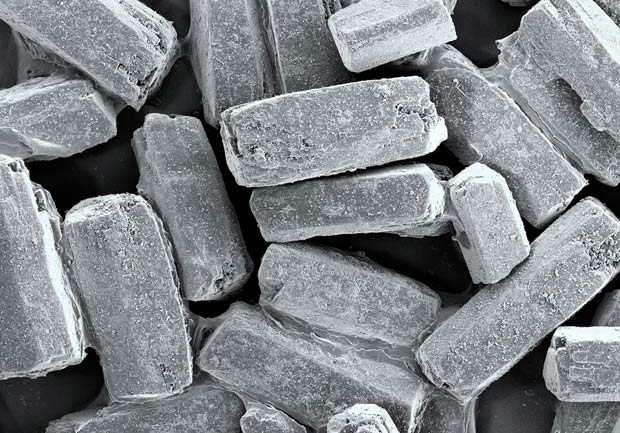
The process was involved, and Alpert had to rely on the help of a technician in Arizona while she curated and sent samples from the Bay Area. Foods need to be dehydrated first and coated with different metals before they are ready, a process that can take 2-6 weeks. When the samples were ready to shoot, Alpert would travel to Arizona. The process of shooting didn’t look anything like a normal photo shoot, in which hundreds of shots can be rattled off in a few hours. It could take a day to get a dozen images, and traversing the surface of the food was painstakingly slow at high magnifications. The sensitivity of the machine was another matter. Situated at the far end of the building from the elevator, Alpert explains, “The slightest bit of movement can affect the machine during a capture.” Working within these constraints, Alpert was able to produce some of the most fascinating food photography in recent memory.
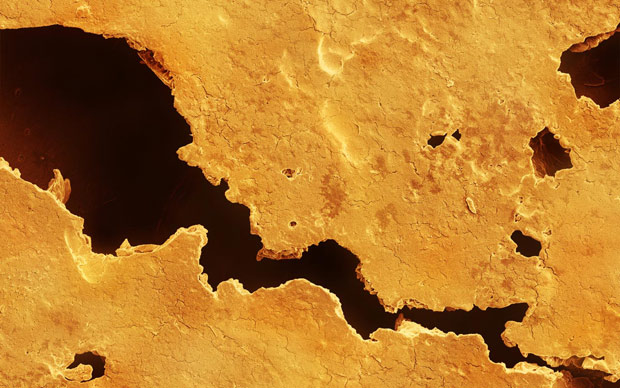
A commercial photographer by trade, Alpert makes her fine art debut with Terra Cibus. “Everything came out of this naturally,” she explains. “I had no idea what I was going to get when I started this project. I honestly had no idea what the scanning electron microscope could produce, so everything from the word ‘go’ was a surprise to me and very serendipitous.” The results are stunning, and often elicit a double-take from the viewer. With fortune cookies that resemble martian landscapes and shrimp tails that look like bird feathers, the images were often surprising to Alpert herself. “When I shot that shrimp tail, obviously I was flabbergasted by what I saw and couldn’t figure out why shrimp have feathers. I was so caught up in this question that I called up the Monterey Bay Aquarium.”
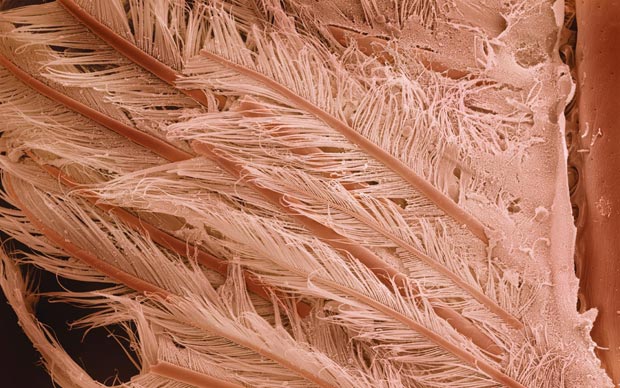
The name Terra Cibus roughly translates as “nurturing from the earth,” and so it’s appropriate that the photographs of sustenance resemble familiar terrains. Alpert recalls reading the children’s science magazine 3-2-1 Contact, which used to have abstracts of everyday life for children to identify with a guess. Her work has a similar effect, relying heavily of the viewer’s subjective experience. Looking at one of her pieces, it’s often hard to classify it as food, art, science or simply technological exploration.
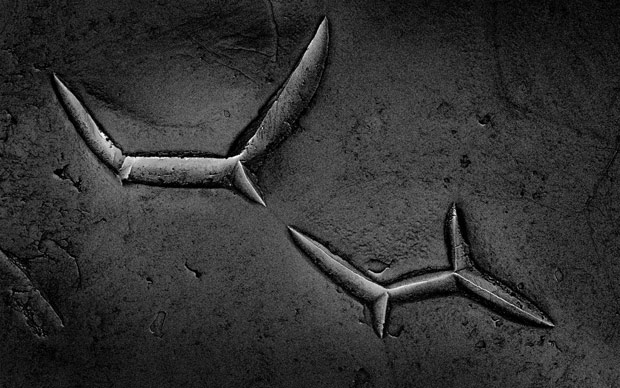
A large portion of the work is on display at the James Beard Foundation in New York, and prints can be purchased by contacting the artist directly through her website.
More images from the show and a description of each of the works in the gallery after the jump
All images copyright Caren Alpert
terra cibus no. 23: purple onion
terra cibus no. 18:sugar
terra cibus no.4: fortune cookie
terra cibus no.32: shrimp tail
terra cibus no.10: kiwi seed
















